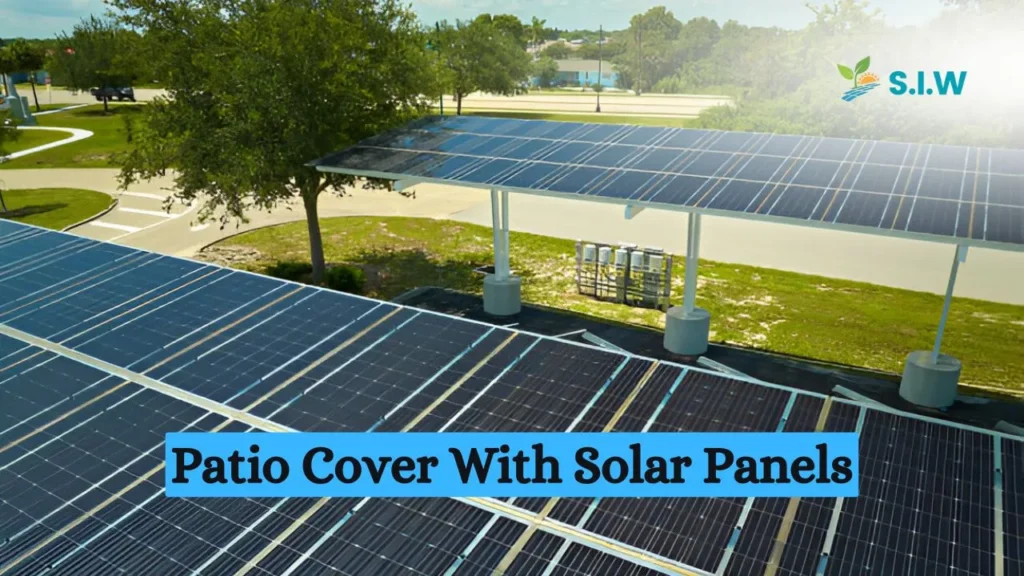In today’s world, where sustainability and energy efficiency are at the forefront of architectural innovations, patio covers with solar panels represent a groundbreaking fusion of functionality and eco-conscious design. This comprehensive guide delves into the myriad benefits, installation processes, and design considerations for integrating solar panels into your patio cover, ensuring you make an informed and impactful choice for your home.
Understanding Patio Covers with Solar Panels
Patio covers are traditionally designed to offer protection from the elements while enhancing outdoor living spaces. When combined with solar panels, these structures not only provide shade and shelter but also harness solar energy to power your home. This dual functionality can lead to substantial energy savings and a reduced carbon footprint.
Benefits of Integrating Solar Panels with Patio Covers
- Energy Efficiency and Cost Savings
Integrating solar panels into your patio cover can significantly minimize your electricity bills. By generating your own power, you reduce your reliance on grid electricity, which often comes with fluctuating rates and environmental impacts. Over time, the savings on your energy bills can offset the initial investment in solar technology.
- Environmental Impact
Solar energy is a clean and renewable resource, making it a sustainable choice for reducing your household’s carbon footprint. By opting for a patio cover with solar panels, you contribute to a greener planet and support the global shift towards renewable energy sources.
- Enhanced Property Value
Homes equipped with energy-efficient features, such as solar panels, often see an increase in property value. Potential buyers are drawn to homes with lower utility costs and sustainable features, making your property more attractive in the real estate market.
- Aesthetic and Functional Design
Modern solar panels are sleek and unobtrusive, allowing for seamless integration into the design of your patio cover. This fusion of functionality and aesthetics ensures that your outdoor space remains visually appealing while providing essential energy benefits.
Design Considerations for Solar-Powered Patio Covers
Choosing the Right Solar Panels
The efficiency and effectiveness of your solar-powered patio cover largely depend on the type of solar panels you choose. There are several options available, each with its own set of advantages:
- Monocrystalline Panels
Known for their high efficiency and sleek appearance, monocrystalline solar panels are a popular choice for residential solar installations. They are made from a single crystal structure, which allows them to convert sunlight into electricity more effectively.
- Polycrystalline Panels
Polycrystalline panels are made from multiple silicon crystals, which makes them less efficient than monocrystalline panels but often more affordable. They are a viable option if you’re looking for a cost-effective solution with decent performance.
- Thin-Film Panels
Thin-film solar panels are lightweight and flexible, making them a versatile choice for various applications. While they generally offer lower efficiency compared to crystalline panels, their adaptability and lower cost can be advantageous for specific designs.
Orientation and Placement
The orientation and placement of your solar panels are crucial for maximizing their energy output. Ideally, solar panels should face true south (in the Northern Hemisphere) to capture the most sunlight throughout the day. Additionally, the angle at which the panels are installed can affect their efficiency. A tilt angle that matches your latitude or slightly higher can optimize solar energy absorption.
Integration with Patio Cover Design
When designing your patio cover, consider how the solar panels will be incorporated into the overall structure. The design should complement your home’s architecture and outdoor space while ensuring that the panels are adequately supported. You can opt for various styles, including:
- Cantilevered Patio Covers
Cantilevered designs provide an elegant solution by extending the cover beyond its support structure, creating a dramatic effect while accommodating solar panels.
- Freestanding Patio Covers
Freestanding patio covers offer flexibility in placement and design, allowing you to position the structure to maximize solar exposure.
3. Attached Patio Covers
Attached patio covers are connected to your home, providing a seamless extension of your living space while integrating solar panels into the existing structure.
Installation Process for Solar-Powered Patio Covers
1. Site Assessment and Planning
Before installation, a thorough site assessment is necessary to determine the optimal location and configuration for your solar-powered patio cover. This assessment includes evaluating sunlight exposure, structural integrity, and local regulations.
2. Design and Permitting
Once the site assessment is complete, work with a professional to design your patio cover and obtain any necessary permits. The design should incorporate the solar panels in a way that maximizes efficiency while adhering to local building codes.
3. Structural Preparation
Prepare the site and structure for the installation of the patio cover and solar panels. This may involve reinforcing existing structures, laying foundations, or making modifications to support the additional weight of the panels.
4. Solar Panel Installation
Install the solar panels according to the design specifications. Ensure that they are securely mounted and properly connected to your home’s electrical system. Professional installation is recommended to ensure safety and optimal performance.
5. System Testing and Commissioning
After installation, test the solar panel system to ensure it is functioning correctly and efficiently. This includes checking electrical connections, verifying energy output, and making any necessary adjustments.
Maintenance and Upkeep
Maintaining your solar-powered patio cover involves regular inspections and cleaning to ensure optimal performance. Check for debris or damage to the panels and clean them periodically to remove dust or dirt that may affect their efficiency.
Conclusion
A patio cover with solar panels is a smart investment that combines practical benefits with aesthetic appeal. By understanding the advantages, design considerations, and installation process, you can make an informed decision that enhances your home’s energy efficiency and contributes to a more sustainable future.








